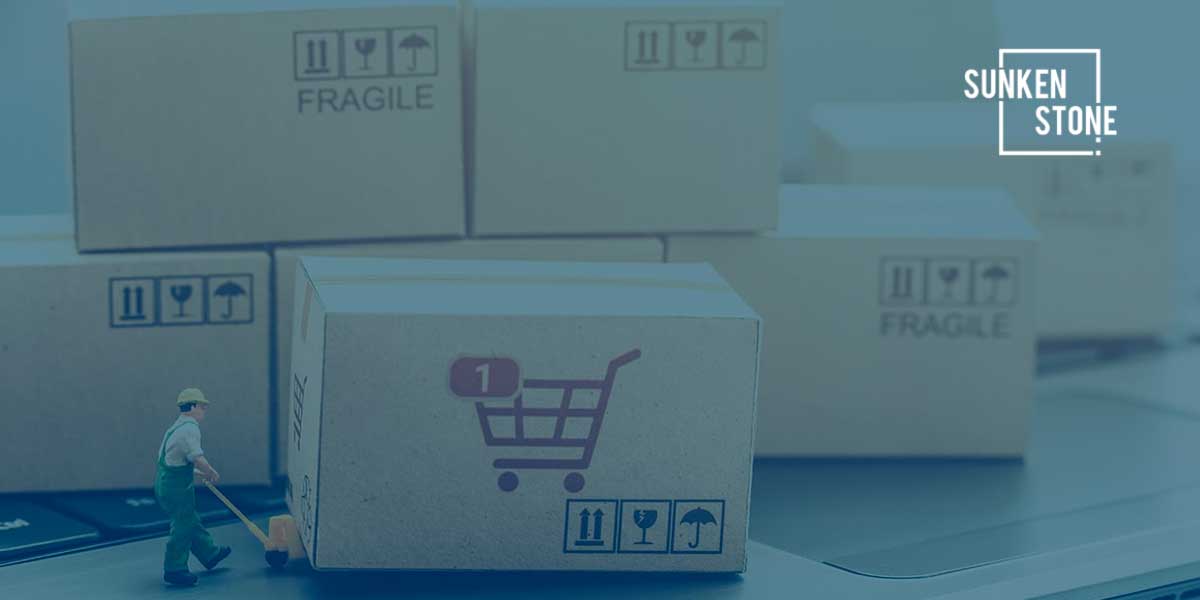
Afterward, we’ll explain the Amazon FBA shipping requirements by discussing everything from the role of inventory labels to different categories having unique FBA shipping and packaging requirements.
We’ll also discuss what sellers should keep in mind when fulfilling orders through Amazon, such as Amazon packaging requirements and rates, following an FBA packing checklist, and more!
So let’s get into this complete resource on Amazon FBA shipping requirements. Here’s everything we cover:
What Is Fulfillment By Amazon (FBA)?

Fulfillment by Amazon or the Amazon FBA service is a program that allows you to store your products in Amazon’s fulfillment centers and have them pick, pack, ship, and provide customer service on your behalf.
Instead of fulfilling your brand’s orders from Amazon customers, Amazon will handle all aspects of product fulfillment for you. You can choose which items to fulfill, set up pickup locations, and even create custom shipping labels.
However, there’s much to know before you can add your products to Amazon’s warehouse network. For example, Amazon has strict guidelines around how they want their products packaged.
In addition, having Amazon fulfill your orders is generally more expensive, depending on your sales volume, product selection, and other factors. Yet it helps most merchants by reducing the work your team must do in-house whenever a customer orders from your brand.
How Does It Differ From Amazon Fulfilled By Merchant (FBM)?
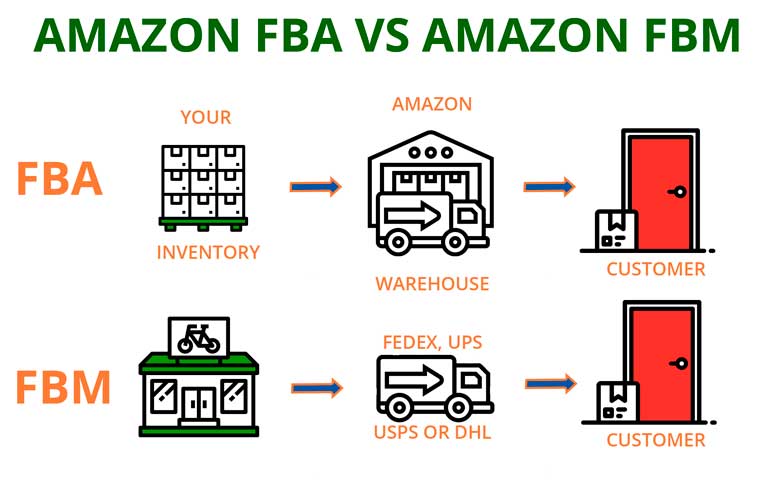
Whenever a brand begins selling on Amazon, they’re required to use the Amazon Fulfilled By Seller (FBS) program. The Amazon Fulfilled By Merchant (FBM) program is similar to the Amazon Fulfilled by Amazon (FBA) program, but with one key difference.
While Amazon handles the fulfillment process for brands using the Amazon Fulfilled Program, merchants who sell directly to consumers must take care of their own shipments. They’ll be responsible for picking, packing, and shipping orders to customers.
Additionally, without Seller Fulfilled Prime (SFPP), sellers cannot offer free two-day delivery on eligible purchases. Thus, Amazon FBA comes with several benefits for brand owners that prefer not to manage their own fulfillment processes.
With that in mind, one of the most vital aspects of joining Amazon FBA is following its specific shipping requirements. These include everything from labeling to packaging materials. If you fail to follow all the requirements, you could end up facing penalties, including suspension of your account.
>> REQUEST A FREE PROPOSAL: Want to make your brand thrive on Amazon & beat your competition? Take 30 seconds to request a proposal from Sunken Stone that’s tailored to your unique needs.
Amazon FBA Shipping Requirements – Everything You Should Know
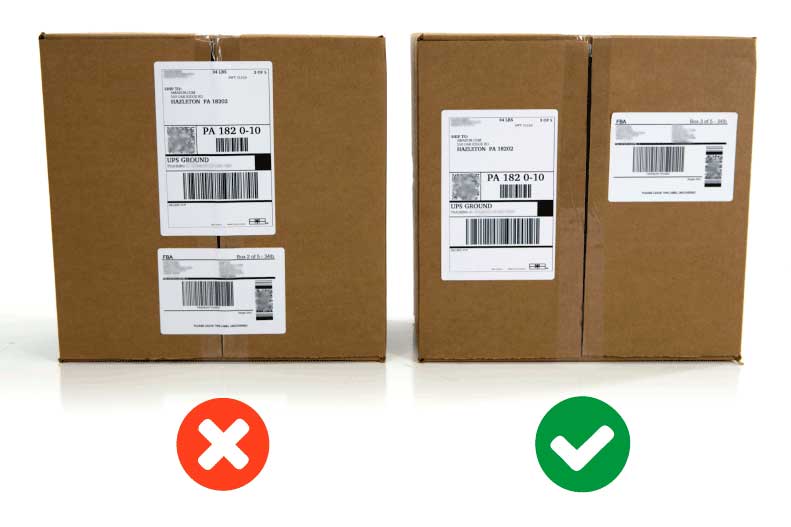
Amazon FBA shipping requirements might not seem like a big deal at first glance, but they can actually vary quite a bit between different product types.
Let’s dive right in and explore some of the most important details about Amazon FBA shipping requirements so you can ensure you’re always compliant.
Here’s everything you should keep in mind before joining Amazon FBA:
It’s Easiest To Follow An Amazon FBA Checklist
We’re going to get into all the technical Amazon FBA shipping requirements soon, but it’s easiest to start with an Amazon FBA checklist.
Using a checklist before shipments will help make sure you don’t miss anything critical while preparing packages to arrive at an Amazon warehouse.
Verify That Your Products Are Properly Packaged
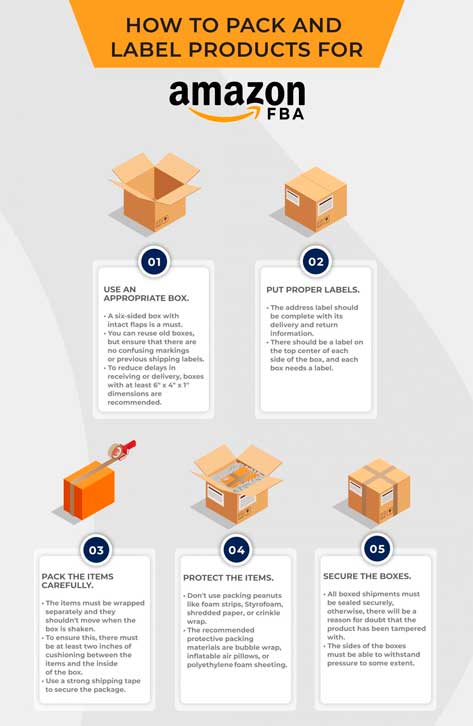
There’s a rule that when a product falls into multiple sales categories on Amazon, it must be prepped according to all preparation types. Although most products can meet general shipping requirements, there are certain product categories, like shampoo and conditioner that have specific preparation needs.
Therefore, you should always review all the packaging requirements for your brand’s products, especially if you’re shipping liquids, batteries, or other potentially hazardous items.
Check For Appropriate SKU Information
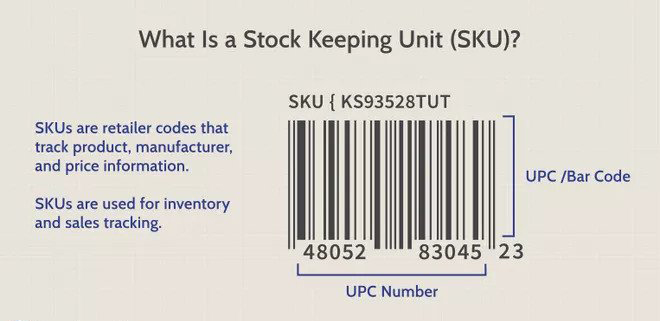
Amazon also considers FNSKUs an essential part of product packaging. Since there might be other barcodes on the packaging, you should remove or make previous SKUs unscannable. This way, when an Amazon Associate scans your FBA items, there won’t be any confusion about your brand’s items.
Additionally, each product needs a physical barcode if you’re paying Amazon to place barcode labels on your packaging. If your products don’t contain a barcode then it’s the seller’s job to print Amazon barcodes for each item and place them on each package.
Get Your Box Dimensions & Package Weights Correct
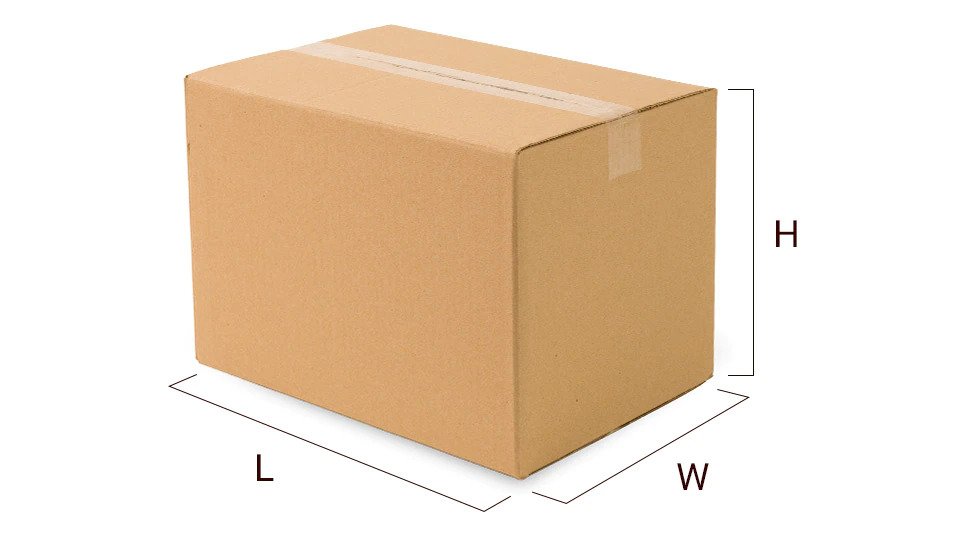
Proper packaging is the cornerstone of success for Amazon FBA merchants. There are specific standards your brand must follow if you don’t want to pay additional FBA fees. Here are the most important points to know:
- If you’re packing multiple standard-size items into one box, then the package should not have dimensions that exceed 25″ on any side.
- Package weight should not exceed 50lbs if you’re packing multiple items into one box.
- Brands must include “team lift” safety labels on the top and sides of the packaging whenever the box contains items that weigh more than 50lbs.
- If the box exceeds 100lbs, it must have “mechanical lift” safety labels on the top and sides of the package.
Without following these rules, Amazon might return your FBA shipments to you, which is incredibly expensive. Whenever possible, contain your items in boxes that comply with the above guidelines.
Use The Correct Packing Materials (Dunnage)
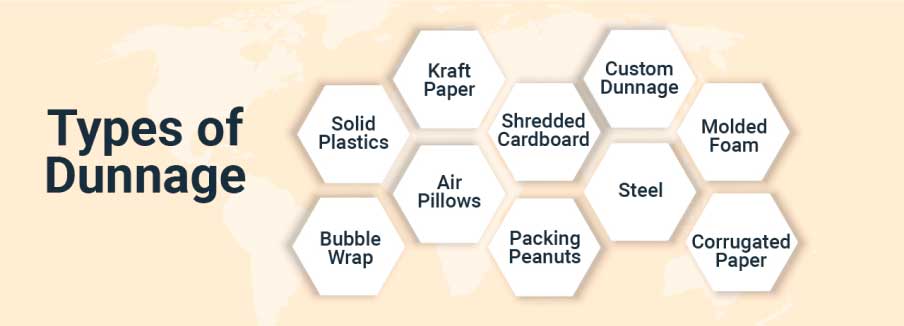
The main reason to include packing materials in each shipment is so your brand can protect each item and ensure it arrives safely to each customer. Each product should be packed with enough dunnage to cover its contents and prevent damage during transit.
Some brands use bubble wrap or plastic sheeting instead of dunnage because they think it looks better. However, this type of packing material isn’t as effective as using actual dunnage. Foam, air pillows, and full sheets of paper are incredibly protective against breakages and dents.
When packing your products, consider the size, shape, and weight of each item. You’ll need to pack different sizes of foam, bubble wrap, and paper depending on how much space each item takes up inside the box.
You can also pack your items carefully by placing them inside protective layers such as foam peanuts, paper towels, or even bubble wraps. These materials keep the items from shifting around and getting damaged during transport.
However, there are specific rules about adding poly bags and bubble wrap to your item, so be sure to verify that these materials meet Amazon’s standards before including them in your packing.
Always Include Shipping Labels
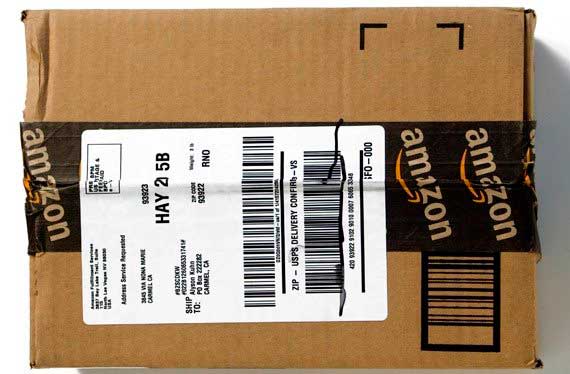
Amazon FBA sellers must always include shipping labels when they send items to a fulfillment center. We already discussed the need for a barcode, but that’s not the only label requirement.
Each label must include the shipment ID, a ship from and ship to address, and any product identifying information (like a UPC, EAN, or GTIN for example.)
If your brand is shipping a small parcel to a fulfillment center then there are specific Amazon FBA shipping requirements to pay attention to.
First, your label placement matters. All labels should be at least 1.25 inches away from the edge of a shipment box. Second, you never want to place labels on corners, edges, or seams where they can easily tear off. Third, make sure to include all relevant information on your labels.
But what if you’re sending a truckload of your brand’s products? Truckloads of inventory have different requirements than smaller parcels.
For large shipments, Amazon requires that you use four FBA shipping labels per pallet. Your team members can place one shipping label on each side of the pallet so that every label has an equal amount of space.
And if your team always wants to meet Amazon standards, there’s a trick you can use. Have team members write down the exact number of labels they use on each side of the box. This will help you avoid having to count your labels later.
Conclusion
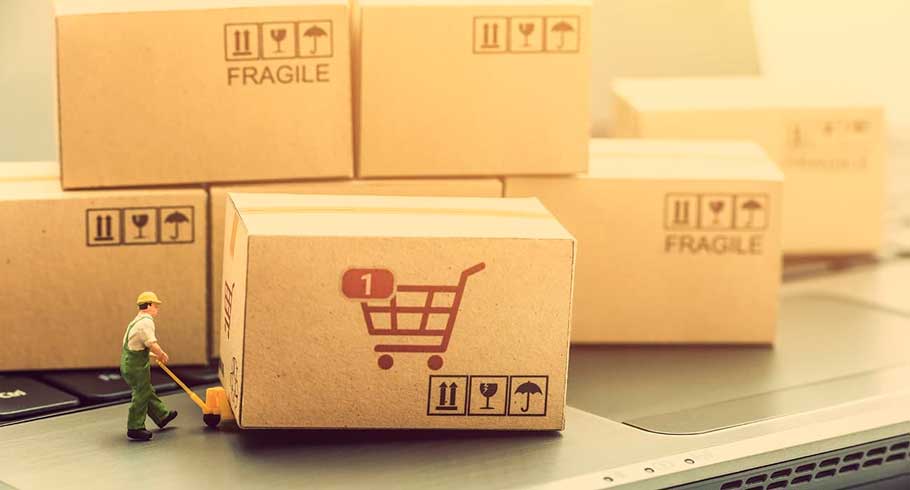
The above list of Amazon FBA shipping requirements is just a starting point. There are many other important factors to consider when shipping your products, especially if you’re going through a third-party logistics provider.
Everything considered, there are many ways to ensure that your products arrive safely at their destination. But remember: It’s crucial that you follow Amazon’s guidelines for shipping your products. If you don’t, you could get banned from selling on Amazon.
Do You Want To Reduce Your Shipping Costs?
Stone Shipping offers small parcel shipping solutions for eCommerce brands because we want to help your business become more profitable.
Reducing your shipping rates can have a massive impact on the profitability of your business. Save on eCommerce shipping with major couriers and ship products cheaper than ever.
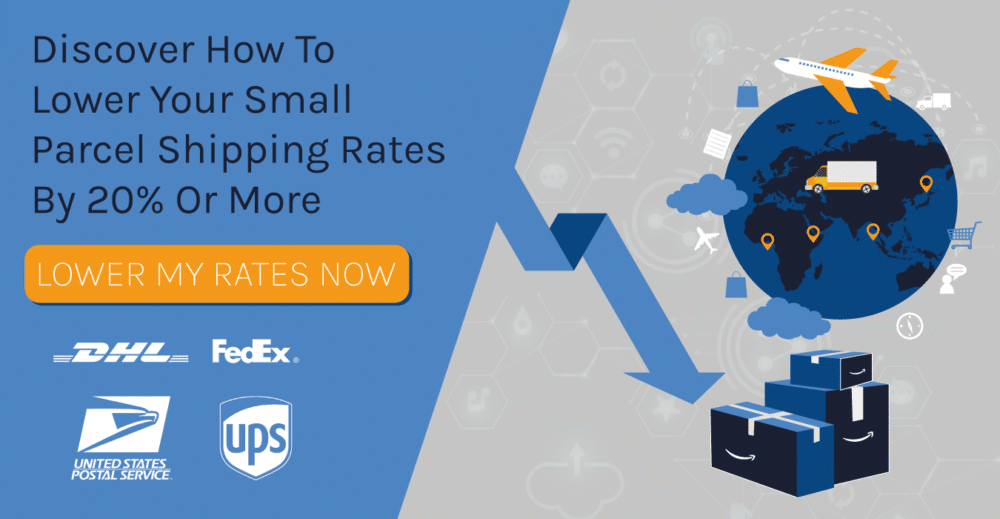
Frequently Asked Questions
Can you use any box for Amazon FBA?
There are specific approved Amazon FBA boxes that your brand can use to ship its products. These boxes come in various sizes, but all of them must comply with Amazon’s standards or else they won’t be accepted by the marketplace.
Does Amazon FBA cover shipping?
Shipping costs are covered by Amazon FBA. You do not pay for the cost to ship items to customers or accept returns for Amazon FBA orders.
How heavy can an FBA shipment be?
Amazon allows you to ship up to 50 pounds (23 kg) of product per order. However, this limit only applies to standard shipping methods. To ship larger quantities, you may have to use a different shipping method.
Is it free to ship to Amazon FBA?
Shipping to an Amazon warehouse is an expense that the merchant covers. Therefore, you should calculate these costs to determine whether the Amazon FBA program makes sense for your business.
